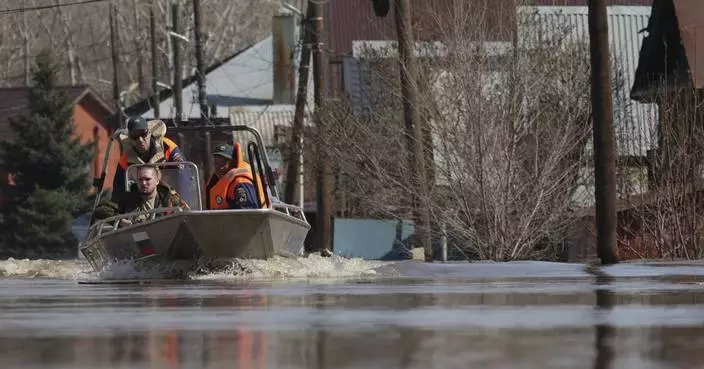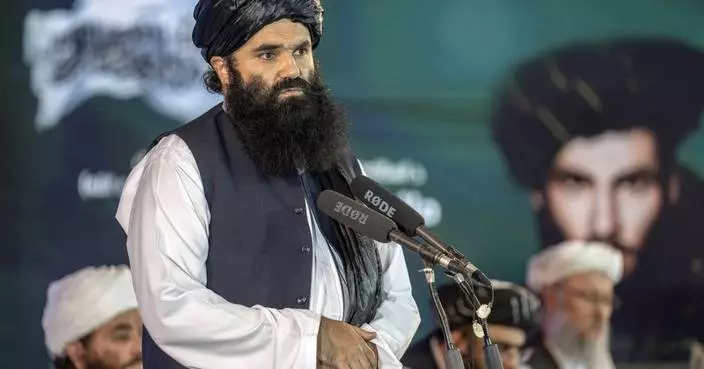The U.N. ‘s top official for refugees said Tuesday that if the Afghan peace process collapses and violence continues, there will be a humanitarian disaster as thousands of displaced people struggle to survive the pandemic amid the harsh winter.
U.N. High Commissioner for Refugees Filippo Grandi told The Associated Press at the end of a four-day visit to Afghanistan that if the fighting continues, there will be more internal displacement.
Click to Gallery
The U.N. ‘s top official for refugees said Tuesday that if the Afghan peace process collapses and violence continues, there will be a humanitarian disaster as thousands of displaced people struggle to survive the pandemic amid the harsh winter.
Violence and chaos have increased in Afghanistan in recent months even as government negotiators and the Taliban are meeting in Qatar to find an end to decades of relentless war. The two sides have made little progress.
He said his message in Geneva would be that countries should be prepared for two scenarios: a good one in which it's necessary to invest in development also on in which, especially in the short term, more food, water and shelter aid will be needed.
“If someone sees our misery they will help us with some loaves of bread, but most of the time, we have to just spend the day with an empty stomach. We are going through a lot of hardship and problems, we want a lot of things, but we can’t afford to have them. My husband is disabled, who else will come to help us,” she said.
The violence “doesn’t create the confidence in the peace process that they need, not only the refugees and displaced, but all the Afghan people," he said. “So, I am telling the Afghan people be patient, but I have to tell the others, hurry up and find the solution soon because it is much needed, 40 years is a long time for suffering."
U.N. High Commissioner for Refugees Filippo Grandi speaks during a news conference in Kabul, Afghanistan, Tuesday, Nov. 17, 2020. (AP PhotoRahmat Gul)
“If this peace effort collapses then we could see a big humanitarian disaster in the country that is for sure, I hope it won't," he said.
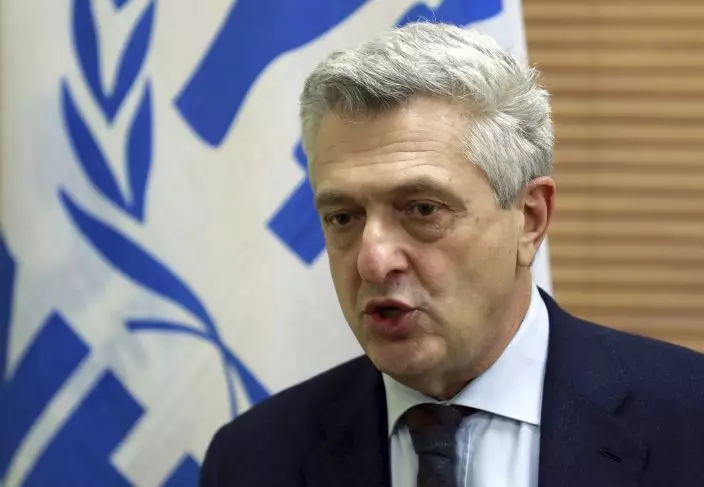
U.N. High Commissioner for Refugees Filippo Grandi speaks during an interview in Kabul, Afghanistan, Tuesday, Nov. 17, 2020. (AP PhotoRahmat Gul)
Violence and chaos have increased in Afghanistan in recent months even as government negotiators and the Taliban are meeting in Qatar to find an end to decades of relentless war. The two sides have made little progress.
“I think we need to be ready for everything here, we need to be ready for more humanitarian issues,” Grandi said.
He urged the international community to remain committed to Afghanistan and called for greater support for displaced and returning Afghans ahead of a donor pledging conference in Geneva next week.
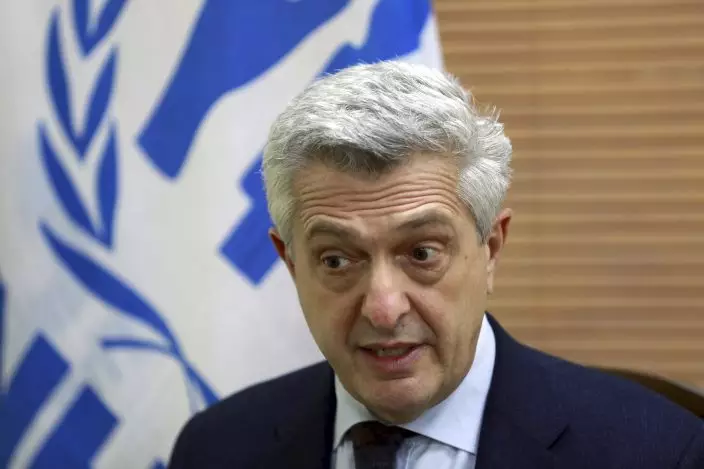
U.N. High Commissioner for Refugees Filippo Grandi speaks during an interview in Kabul, Afghanistan, Tuesday, Nov. 17, 2020. (AP PhotoRahmat Gul)
He said his message in Geneva would be that countries should be prepared for two scenarios: a good one in which it's necessary to invest in development also on in which, especially in the short term, more food, water and shelter aid will be needed.
Arzo, 27, who like many Afghans goes by only one name, is the mother of six children living in the Bagrami camp for displaced people on the outskirts of Kabul. She told The Associated Press recently that the family's only breadwinner is 8-year-old Fawad, who sells plastic bags in the local market. She said her husband lost his right leg, the victim of a suicide attack in Nangarhar province.
Arzo’s eldest daughter, 10-year-old Husna, collects burnable garbage for the mother to cook a meal or boil tea in the corner of the house.

U.N. High Commissioner for Refugees Filippo Grandi speaks during a news conference in Kabul, Afghanistan, Tuesday, Nov. 17, 2020. (AP PhotoRahmat Gul)
“If someone sees our misery they will help us with some loaves of bread, but most of the time, we have to just spend the day with an empty stomach. We are going through a lot of hardship and problems, we want a lot of things, but we can’t afford to have them. My husband is disabled, who else will come to help us,” she said.
In addition to Afghans displaced within the country, more than 742,000 Afghans have returned from Iran and Pakistan since the beginning of this year, according to the International Organization for Migration. The majority of them are working and trying to provide for large families. But with the lack of job opportunities and insecurity, it is often not possible for the breadwinner of a large family to adequately support them financially.
Grandi appealed to all sides of the conflict to reduce the violence in Afghanistan.
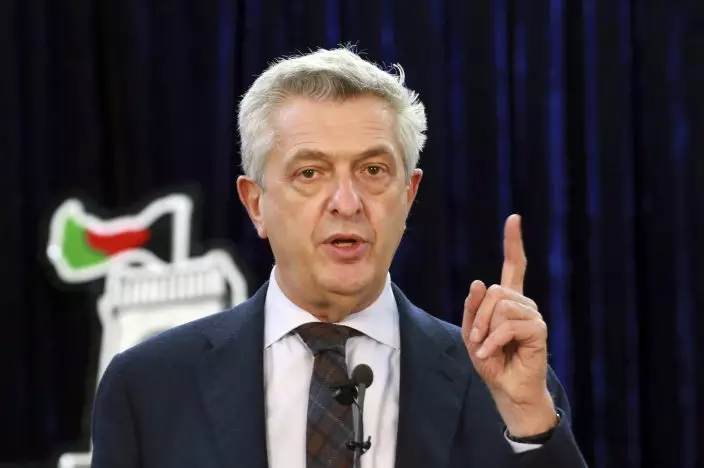
U.N. High Commissioner for Refugees Filippo Grandi speaks during a news conference in Kabul, Afghanistan, Tuesday, Nov. 17, 2020. (AP PhotoRahmat Gul)
The violence “doesn’t create the confidence in the peace process that they need, not only the refugees and displaced, but all the Afghan people," he said. “So, I am telling the Afghan people be patient, but I have to tell the others, hurry up and find the solution soon because it is much needed, 40 years is a long time for suffering."
————————
Associated Press writer Tameem Akhgar contributed to this report.
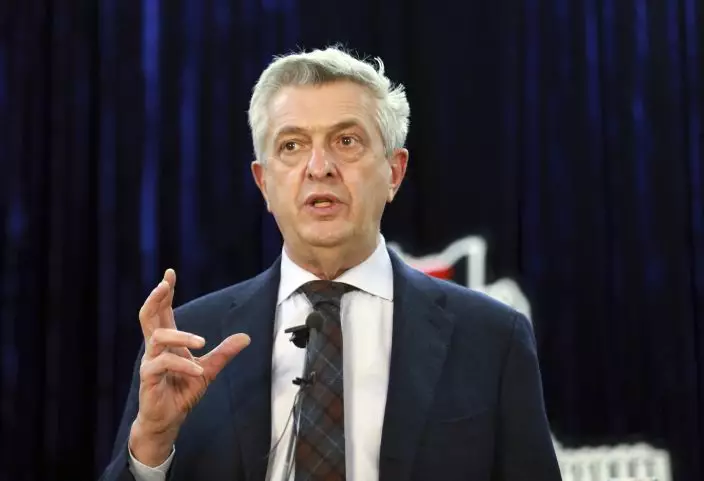
U.N. High Commissioner for Refugees Filippo Grandi speaks during a news conference in Kabul, Afghanistan, Tuesday, Nov. 17, 2020. (AP PhotoRahmat Gul)

U.N. High Commissioner for Refugees Filippo Grandi speaks during a news conference in Kabul, Afghanistan, Tuesday, Nov. 17, 2020. (AP PhotoRahmat Gul)
WASHINGTON (AP) — The suicide bombing at the Kabul airport that killed U.S. troops and Afghans in August 2021 was not preventable, and the “bald man in black” spotted by U.S. service members the morning of the attack was not the bomber, according to a new review by U.S. Central Command.
The findings, released Monday, refute assertions by some service members who believed they had a chance to take out the would-be bomber but did not get approval. And, for the first time, the U.S. military is confirming that the bomber was Abdul Rahman al-Logari, an Islamic State militant who had been in an Afghan prison but was released by the Taliban as the group took control of the country that summer.
The Abbey Gate bombing during the final chaotic days of the Afghanistan withdrawal killed 13 U.S. service members and 170 Afghans, and wounded scores more. It triggered widespread debate and congressional criticism, fueled by emotional testimony from a Marine injured in the blast, who said snipers believe they saw the possible bomber but couldn't get approval to take him out.
Former Marine Sgt. Tyler Vargas-Andrews told the House Foreign Affairs Committee last March that Marines and others aiding in the evacuation were given descriptions of men believed to be plotting an attack. Vargas-Andrews, who was injured in the blast but not interviewed in the initial investigation, said he and others saw a man matching the description and might have been able to stop the attack, but requests to take action were denied.
In a detailed briefing to a small number of reporters, members of the team that did the review released photos of the bald man identified by military snipers as a potential threat and compared it with photos of al-Logari. The team members, who spoke to reporters on condition of anonymity to provide details not yet made public, described facial recognition and other analysis they used that they said confirmed those were not the same man.
“For the past two years, some service members have claimed that they had the bomber in their sights and they could have prevented the attack. We now know that is not correct,” said a team member.
They said they also showed the photo of the bald man to service members during the latest interviews, and that the troops again confirmed that was the suspicious man they had targeted.
The review notes that the bald man was first seen around 7 a.m. and that troops lost sight of him by 10 a.m. The bombing was more than seven hours later, and the U.S. says al-Logari didn't get to Abbey Gate until “very shortly” before the blast took place. They declined to be more specific about the timing, saying details are classified.
Family members of those killed in the blast received similar briefings over the past two weekends and some are still unconvinced.
“For me, personally, we are still not clear. I believe Tyler saw what Tyler saw and he knows what he saw. And it was not the guy that they were claiming was the man in black,” Jim McCollum, the father of Marine Lance Cpl. Rylee McCollum, told The Associated Press.
He said the team went into “pretty good detail, not trying to discredit Tyler, but effectively saying he was wrong. However, that ended up being as clear as mud to us.”
And Mark Schmitz, the father of Marine Lance Cpl. Jared Schmitz, questioned the photo itself.
“They kept saying this is who Tyler Vargas-Andrews was looking at and we were thinking to ourselves, ‘well, that’s interesting. Why is this a picture of a picture from a Canon camera?’” he said. “To me it felt like they were trying to find the guy in those cameras that may have come close to looking like somebody of interest that they can try to sell to us.”
The families, however, also said they were relieved to get more details about their loved ones' deaths, saying the initial briefings were not as good.
Schmitz said that Army Gen. Eric Kurilla, head of U.S. Central Command, was part of the latest briefing and apologized for how the families were treated during the initial probe. This time around officials were able to share with Schmitz for the first time exactly where his son was when the bomb went off and that he was unconscious almost immediately, and therefore did not feel the impact of the shrapnel that went through his left torso, hitting a primary artery.
“That to me was, first and foremost, the best news I could have gotten,” Schmitz said. “That gave me a little bit of closure that my son didn’t suffer, which made me feel really good.”
Team members said they also are planning to speak with the troops who were interviewed this time, to share the results of the report.
They said the review also could not completely rule out claims that militants did a test run of the bombing several days earlier. But after reviewing photos and other intelligence, the team concluded it was unlikely that three men seen carrying a large bag — which troops deemed suspicious — were doing a trial run.
More broadly, the team said the review brought some new details to light, including more discussion about the possible bombing test run. But they said overall it confirmed the findings of U.S. Central Command's initial investigation into the bombing: that it was not preventable and that reports of threats prior to the bombing were too vague.
As an example, the new review noted that threat reports talked about a possible bomber with groomed hair, wearing loose clothes, and carrying a black bag. That description, the review said, could have matched anyone in the enormous crowd desperately trying to get into the airport.
The team said they conducted 52 interviews for the review — adding up to a total of 190 when the previous investigation is included. Service members were asked about 64 questions, and the sessions lasted between one hour and seven hours long.
A number of those questioned weren't included in the original investigation, many because they were severely wounded in the attack. The new review was ordered last September by Kurilla, largely due to criticism of the initial investigation and assertions that the deadly assault could have been stopped.
Members of the team said the Islamic State group put out the bomber's name on social media, but U.S. intelligence was later able to independently confirm that report.
U.S. Central Command’s initial investigation concluded in November 2021 that given the worsening security situation at the airport’s Abbey Gate as Afghans became increasingly desperate to flee, “ the attack was not preventable at the tactical level without degrading the mission to maximize the number of evacuees.”
Critics have slammed the Biden administration for the catastrophic evacuation, and they've complained that no one was held accountable for it. And while the U.S. was able to get more than 130,000 civilians out of the country during the panic after the Taliban took control of the government, there were horrifying images of desperate Afghans clinging to military aircraft as they lifted off.
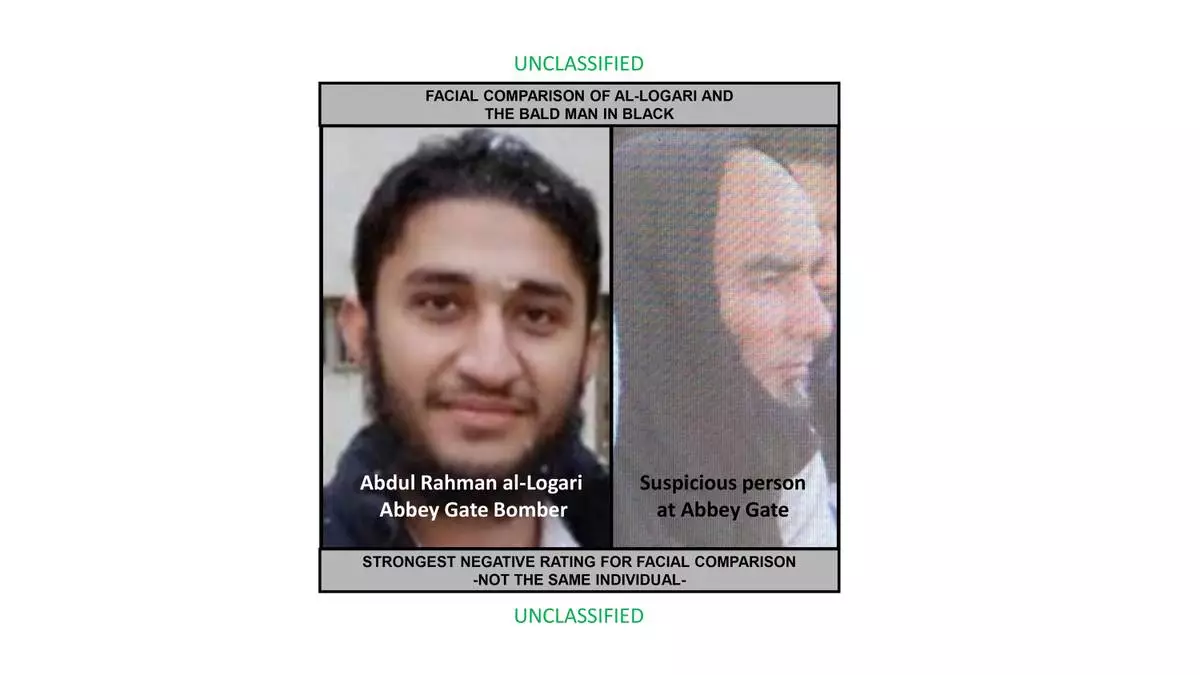
This combination photo shows a an image taken from a sniper team member's camera of the "bald man, in black" right, and a photo of the actual bomber, Islamic State militant Abdul Rahman al-Logari. A review released Monday, April 15, 2024, says the suicide bombing at the Kabul airport that killed U.S. troops and Afghans in August 2021 was not preventable, and the “bald man in black” spotted by U.S. service members the morning of the attack was not the bomber. (U.S. Central Command via AP)
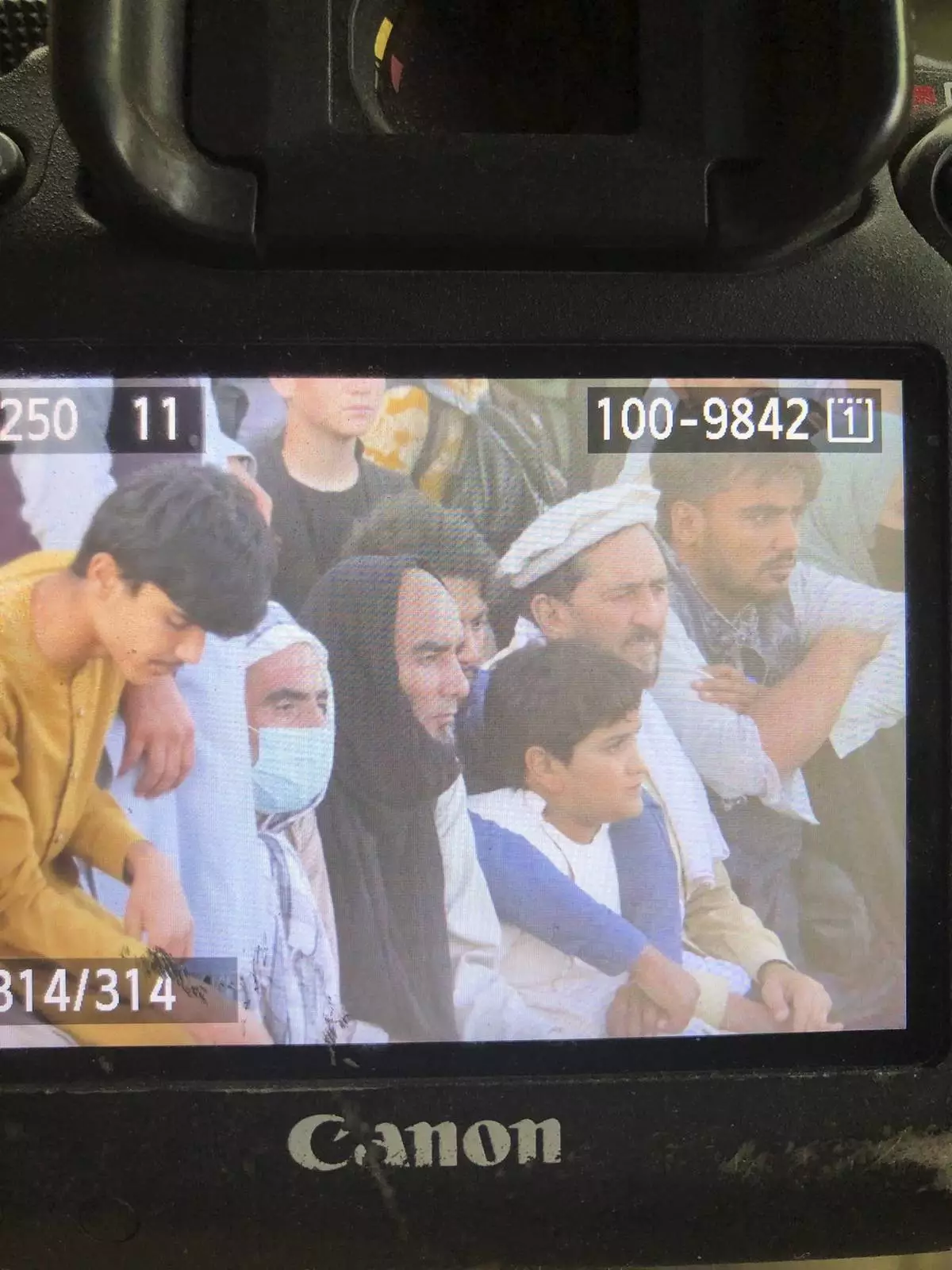
A digital display of a sniper team member's camera on August 26, 2021, shows the "bald man in black" that some service members believed was the would-be bomber. A review released Monday, April 15, 2024, says the suicide bombing at the Kabul airport that killed U.S. troops and Afghans in August 2021 was not preventable, and the “bald man in black” spotted by U.S. service members the morning of the attack was not the bomber. (U.S. Central Command via AP)
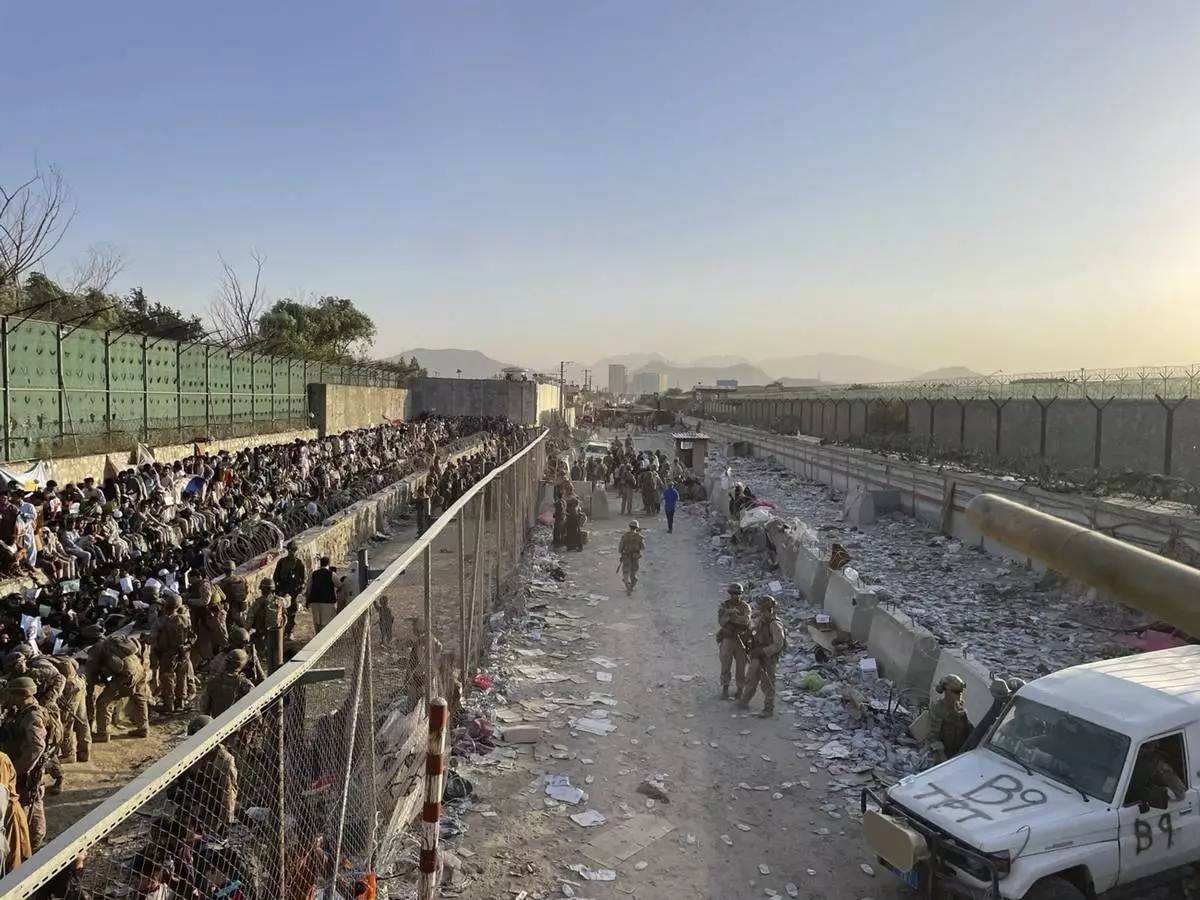
The bombing area at Abbey Gate is pictured August 26, 2021, in Kabul, Afghanistan, before the blast. A review released Monday, April 15, 2024, says the suicide bombing at the Kabul airport that killed U.S. troops and Afghans in August 2021 was not preventable, and the “bald man in black” spotted by U.S. service members the morning of the attack was not the bomber. (U.S. Central Command via AP)












